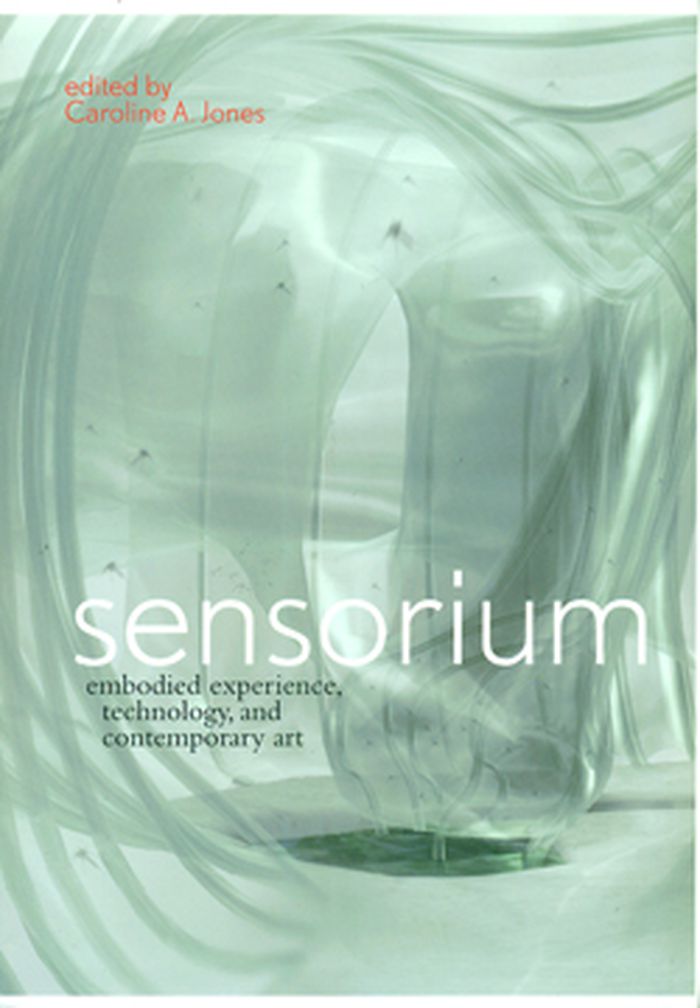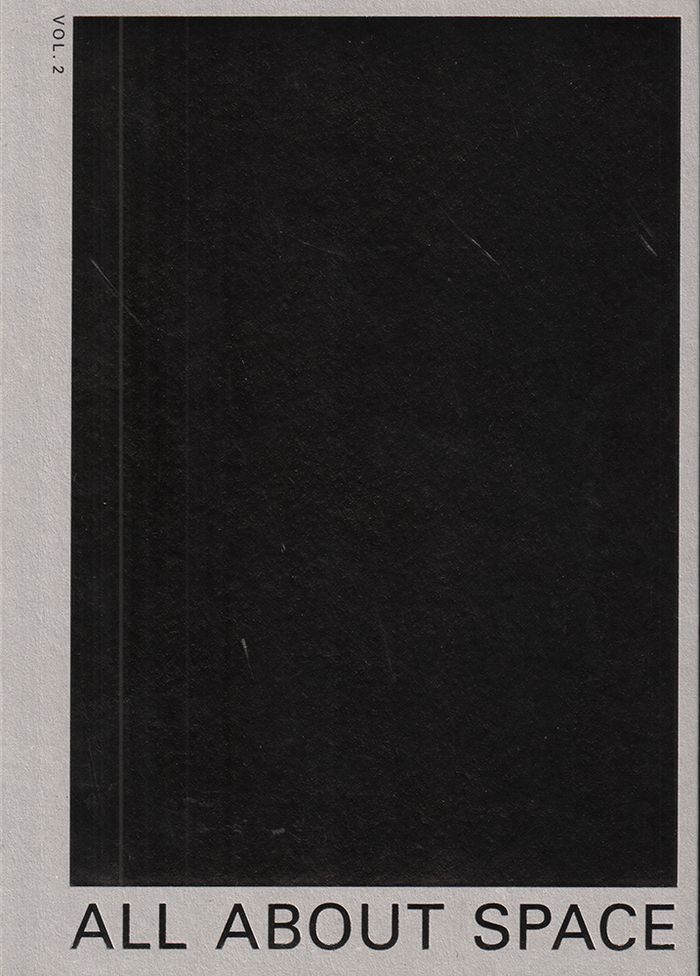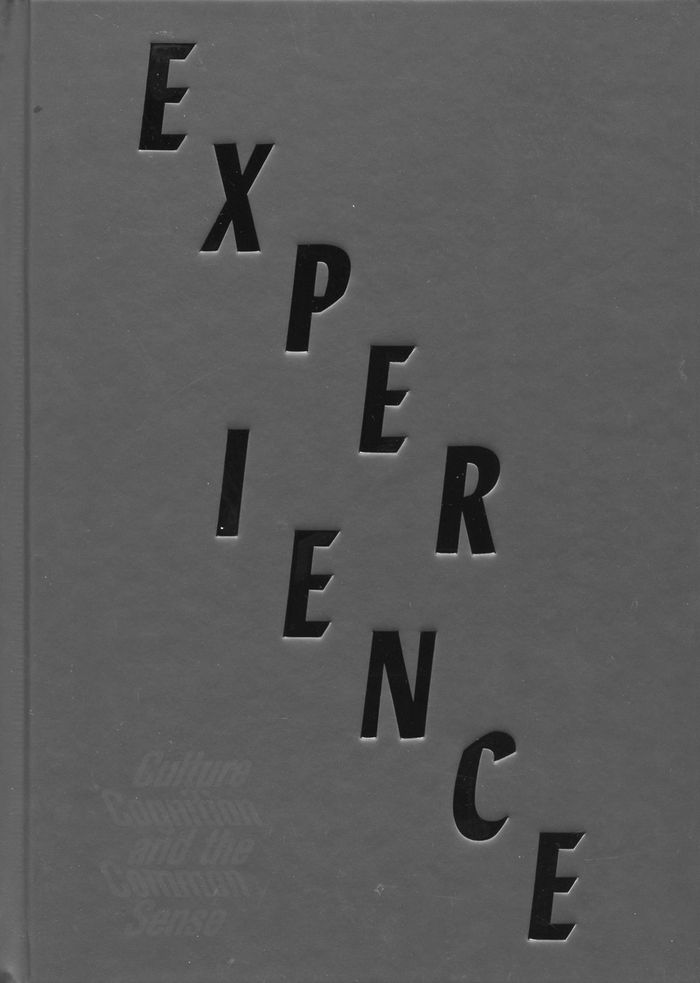$37.50
(available to order)
Summary:
The relationship between the body and electronic technology, extensively theorized through the 1980s and 1990s, has reached a new technosensual comfort zone in the early twenty-first century. In "Sensorium", contemporary artists and writers explore the implications of the techno-human interface. Ten artists, chosen by an international team of curators, offer their own(...)
Contemporary Art Monographs
October 2006, Cambridge, Mass.
Sensorium : embodied experience, technology, and contemporary art
Actions:
Price:
$37.50
(available to order)
Summary:
The relationship between the body and electronic technology, extensively theorized through the 1980s and 1990s, has reached a new technosensual comfort zone in the early twenty-first century. In "Sensorium", contemporary artists and writers explore the implications of the techno-human interface. Ten artists, chosen by an international team of curators, offer their own edgy investigations of embodied technology and the technologized body. These range from Matthieu Briand's experiment in "controlled schizophrenia" and Janet Cardiff and Georges Bures Miller's uneasy psychological soundscapes to Bruce Nauman's uncanny night visions and François Roche's destabilized architecture. The art in "Sensorium" - which accompanies an exhibition at the MIT List Visual Arts Center - captures the aesthetic attitude of this hybrid moment, when modernist segmentation of the senses is giving way to dramatic multisensory mixes or transpositions. Artwork by each artist appears with an analytical essay by a curator, all of it prefaced by an anchoring essay on "The Mediated Sensorium" by Caroline Jones. In the second half of "Sensorium", scholars, scientists, and writers contribute entries to an "Abecedarius of the New Sensorium." These short, playful pieces include Bruno Latour on "Air," Barbara Maria Stafford on "Hedonics," Michel Foucault (from a little-known 1966 radio lecture) on the "Utopian Body," Donna Haraway on "Compoundings," and Neal Stephenson on the "Viral." Sensorium is both forensic and diagnostic, viewing the culture of the technologized body from the inside, by means of contemporary artists' provocations, and from a distance, in essays that situate it historically and intellectually.
Contemporary Art Monographs
$91.00
(available to order)
Summary:
Global biennials have proliferated in the contemporary art world, but artists’ engagement with large-scale international exhibitions has a much longer history that has influenced the present in important ways. Going back to the earliest world’s fairs in the nineteenth century, this book argues that 'globalism' was incubated in a century of international art contests and(...)
The global work of art: world's fairs, biennials, and the aesthetics of experience
Actions:
Price:
$91.00
(available to order)
Summary:
Global biennials have proliferated in the contemporary art world, but artists’ engagement with large-scale international exhibitions has a much longer history that has influenced the present in important ways. Going back to the earliest world’s fairs in the nineteenth century, this book argues that 'globalism' was incubated in a century of international art contests and today constitutes an important tactic for artists.
Museums and Universal Exhibitions
$61.95
(available to order)
Summary:
"Experience" offers a reading experience like no other. A heat-sensitive cover by Olafur Eliasson reveals words, colors, and a drawing when touched by human hands. Endpapers designed by Carsten Höller are printed in ink containing carefully calibrated quantities of the synthesized human pheromones estratetraenol and androstadienone, evoking the suggestibility of human(...)
Critical Theory
September 2016
Experience : culture, cognition, and the common sense
Actions:
Price:
$61.95
(available to order)
Summary:
"Experience" offers a reading experience like no other. A heat-sensitive cover by Olafur Eliasson reveals words, colors, and a drawing when touched by human hands. Endpapers designed by Carsten Höller are printed in ink containing carefully calibrated quantities of the synthesized human pheromones estratetraenol and androstadienone, evoking the suggestibility of human desire. The margins and edges of the book are designed by Tauba Auerbach in complementary colors that create a dynamically shifting effect when the book is shifted or closed. When the book is opened, bookmarks cascade from the center, emerging from spider web prints by Tomás Saraceno. Experience produces experience while bringing the concept itself into relief as an object of contemplation. The sensory experience of the book as a physical object resonates with the intellectual experience of the book as a container of ideas.
Critical Theory


